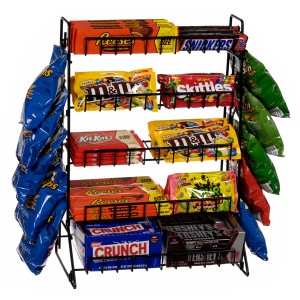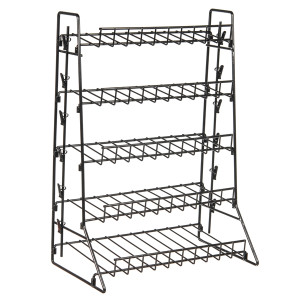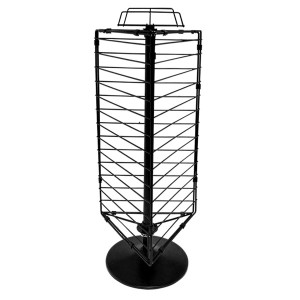 Retail is tough, no doubt about it. You face a constant struggle of trying to maximize customer satisfaction and profits at the same time. Every person who walks through your door wants a deal while you want to improve profit margins. There’s one place in your store where you have an opportunity to cash in on impulse purchases—at checkout. It’s the number one place where consumers make buying decisions not related to value or need, but rather from want or convenience.
Retail is tough, no doubt about it. You face a constant struggle of trying to maximize customer satisfaction and profits at the same time. Every person who walks through your door wants a deal while you want to improve profit margins. There’s one place in your store where you have an opportunity to cash in on impulse purchases—at checkout. It’s the number one place where consumers make buying decisions not related to value or need, but rather from want or convenience.
5 Reasons For Using Counter Displays
Counter displays can be one of the most profitable areas of your store. Counter displays come in all shapes, colors and sizes, and hold a variety of different types of merchandise. You’re only limited by your imagination.
Here are a ways to make the most of that valuable real estate.
- Profit is key. For most retailers, there’s just not a lot of space at the register, and that means a counter display must contain items with a higher margin to make it worthwhile.

A 4 1/2 inch X 8 1/2 inch Black 5 Tier Countertop Display with 2 Clipping Strips maximizes counter space for effective impulse sales
While markup varies from industry to industry, there’s no reason you should ever mark up your counter goods less than 100%. The ultimate goal of counter displays is to increase your per-customer sale and to increase total margin. High-profit goods are critical. If you’re uncertain about which items are appropriate for your business, ask your trusted retail supply vendor. A good sales rep will find the perfect products for you.
- Keep it simple. One common mistake retailers make in counter displays is to overdo it. At most, you should offer one or two options. Any more choices can induce “analysis paralysis” in customers who are confused or overwhelmed with too many choices. Think about lighters on display at a convenience store—the only option customers have to make is color. Don’t give customers too much to think about; keep your displays simple and make the price obvious.
- Make it snappy. Especially during peak traffic times, the last thing you want to do is slow things down at the register. Displays that are clean, uncluttered, and have prices marked, help keep traffic moving. Bright, eye-catching items make the choice simple: Do I buy or not? Customers need to make those decisions quickly—without engaging cashiers in long Q&A sessions, and without holding up the line.
- Make it inexpensive. The very best impulse purchases are less than $10. You want the customer to add the item without

A 27-1/2″H Spinning Triple Sided Counter display allows for visibility from all sides and is great for key chains, carded jewelry, gift cards, or any impulse items.
considering cost, and that means the price point had better be low. Think about liquor stores—you frequently see miniature liquor bottles on counters, and many of those only cost $1 or $2. But when they’re high-profit, high-volume items, those dollars add up quickly.Inexpensive items also let customers add to their purchases quickly, rather than calculating if they have enough cash in their wallets. Two dollars isn’t much (unless you multiply it by 40 customers).
- Make it seasonal. Whether you have a basket of red and green Christmas keychains or individually-wrapped chocolates for Valentine’s Day, get the most out of holiday purchases. Items with gift tags attached make it easy to add on to a teacher’s present or as a stocking stuffer. Customers are far more likely to make an impulse purchase if it’s something they consider fun. Candy pumpkins, red, white, and blue notepads, or Easter bunny earrings. Think festive, frivolous, and fun.
How Impulse Buys Impact Future Purchases
A few more tips for making counter displays work for you: keep your displays current. When customers get used to a display, they no longer see it, so keep it fresh. Also, when it’s possible, use counter displays to offer trial sizes of new products. If customers can try a new flavor or scent of an old favorite, they’ll be more likely to buy the full-sized item on a subsequent visit. Finally, keep displays clean, well-stocked, and—yes, it bears repeating—always, always make the price readily apparent.
Counter displays can be one of your profit centers—add-on opportunities that add up!
